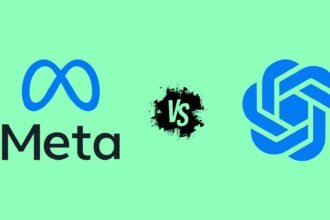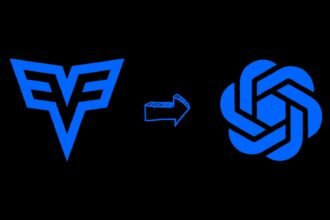Large Vision Models (LVMs) are at the forefront of revolutionizing how machines interpret visual data. Just as Large Language Models (LLMs) have transformed text understanding and generation, LVMs leverage deep learning and complex neural networks to bring a nuanced understanding to visual content.
These advanced models go beyond basic image recognition, diving deep into image analysis, pattern recognition, and even intricate tasks like medical image interpretation.
Unlike earlier image processing methods reliant on predefined features, LVMs autonomously learn and identify these features, marking a significant leap in machine-based visual comprehension.
What is Large Vision Models (LVMs)
Large Vision Models (LVMs) represent a significant advancement in machine-based visual understanding. Similar to their text-based counterparts, Large Language Models (LLMs), LVMs are designed to autonomously learn from a vast array of visual data.
They use deep learning and intricate neural networks to not just ‘see’ but to comprehend and analyze images, extracting complex details and recognizing patterns.
These models have moved past the earlier image processing methods that depended on predefined feature detection. LVMs autonomously identify these features, displaying remarkable skills.
They can create highly realistic images, provide detailed descriptions, accurately categorize images, and even interpret complex medical imagery, like X-rays.
How Do Large Vision Models Work?
The core of LVMs is convolutional neural networks (CNNs), renowned for their effectiveness in image recognition.
These models replicate the layered approach humans use to process visuals, increasing complexity with each layer. Initially trained on large sets of labeled images, LVMs refine their understanding through backpropagation, a feedback loop.
They start by recognizing simple features and progressively identify more complex patterns. With attention mechanisms, LVMs focus on the most crucial parts of an image.
They are also proficient in transfer learning, applying knowledge from one task to another, enhancing their versatility and efficiency in different visual tasks.
Key Differences Between LVMs from LLMs
While LVMs and LLMs share similar learning frameworks, they cater to different data types – visual for LVMs and textual for LLMs. LLMs have made their mark in understanding and generating text, benefiting from the vast array of text on the internet.
They adapt well to various textual forms, thanks to the consistent nature of text data. On the other hand, LVMs operate in a more complex, multimodal space, handling both visual and textual data. They excel in tasks requiring a comprehensive understanding of both images and text.
However, training LVMs is more challenging due to the diverse and intricate nature of visual data online. This complexity often necessitates sector-specific LVMs that can understand and analyze the subtle patterns unique to those areas, providing precision and performance that general LVMs cannot achieve.
Domain-Specific LVM Applications: Customizing AI for Different Industries
LVMs showcase their adaptability by tailoring their capabilities to various industry-specific needs:
- Healthcare: In the healthcare sector, LVMs are revolutionizing the field by providing detailed analyses of medical images, facilitating early disease detection, and aiding in the creation of precise surgical robots.
- Manufacturing: LVMs play a pivotal role in the manufacturing industry, ensuring product quality through detailed inspections and aiding in the predictive maintenance of machinery to guarantee operational efficiency.
- Security and Surveillance: In the realm of security, LVMs strengthen safety measures by employing advanced object recognition and facial detection technologies, enhancing surveillance capabilities.
- Retail and E-commerce: LVMs enhance the shopping experience in retail by powering visual search engines and recommendation systems, ensuring product offerings align with customer visual preferences.
- Agriculture: LVMs are invaluable in agriculture for monitoring crop health and managing weed control, providing farmers with essential data to protect and maximize their crop yields.
Challenges in Implementing and Managing LVMs
While LVMs hold the potential to transform industries, their integration comes with its set of ethical and practical challenges:
1. Ethical Considerations: Ensuring fairness and transparency is crucial. Efforts must be made to diversify training datasets and clarify model functionalities to prevent bias and promote responsible AI use.
2. Skill Development and Strategic Planning: Successful LVM integration requires a clear strategic approach, a culture that embraces innovation, and a team skilled in data and technology management.
3. Security Risks: Protecting sensitive information and securing LVMs against potential cyber threats is essential. Robust security measures are necessary to maintain data privacy and integrity.
4. Integration and Scalability: Adapting LVMs to fit existing systems and scaling them to meet business demands pose significant challenges. Adopting compatible tools and technologies is key to achieving seamless integration and scalability.
Conclusion
Large Vision Models are reshaping industries, offering unparalleled insights and automations in fields as diverse as healthcare, manufacturing, and agriculture.
While their potential is immense, navigating the implementation of LVMs involves addressing complex ethical, technical, and security challenges. Ensuring that these advanced models are used responsibly, integrated seamlessly into existing systems, and scaled appropriately is paramount.
As we continue to harness the capabilities of LVMs, a balanced approach that respects ethical considerations, fosters skill development, and emphasizes robust security measures will be essential.
This approach will not only mitigate risks but also unlock the full potential of LVMs, paving the way for innovative solutions across various sectors.









